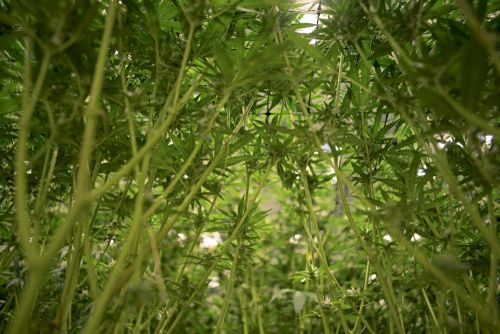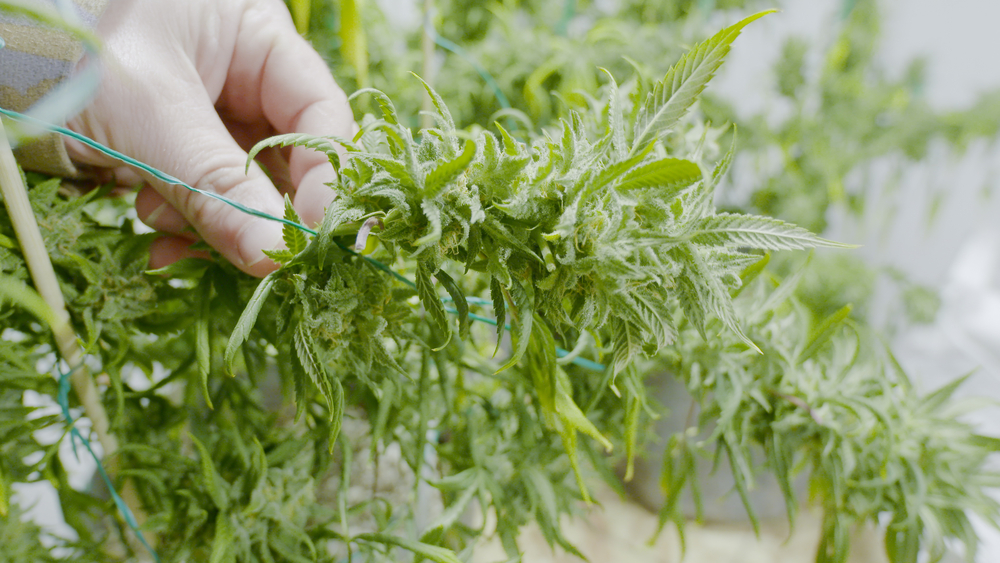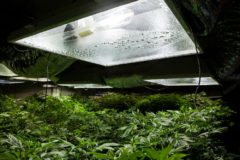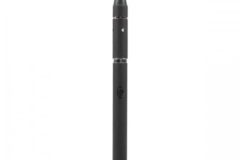If you’re looking to maximize your grow area’s space, you might want to read more about upside-down growing. Basically, how it works is that you place as many plants on the floor, and then you place some hanging from the top, growing upside down.
One of the best soils for these inverted operations is Coir, also known as coconut fiber. You don’t actually require many marijuana growing tools for this operation.
The Setup
 First, you must have a pot, preferably a sturdy one, with hanging wires in the mouth.
First, you must have a pot, preferably a sturdy one, with hanging wires in the mouth.
Now, you’re going to place it upside-down, and you’re going to stuff your coco fiber (or desired soil) in the lower end, which should be the mouth.
Once you have that layer of fiber down there, go up, towards the “sitting” end and pour your potting soil. Make sure you fill all the way up, to the top.
Plant your seedlings or starter plant. Take care of it as normal, water and fertilize, and allow it to stand for two weeks or so, until the roots take a tight hold. It’s super important that you don’t turn the pot upside down right away.
When you feel that the roots have taken a hold, invert the pot (making the plant face downward) and hang it by the wires of the pot.
Take care of your plant as you would usually!
- Watering
You would water and fertilize as normally, but using a slow-drip irrigation system might make the whole process easier. Those with a lot of height to spare could just use a ladder to stand and water the plants as normal, so it’s no biggie.
Generally, coco fiber doesn’t drip that much. You can always use cork or rubber hydroponic plugs, or a different soil mix that holds more water.
Lastly, using a cool tube or something similar might help you, but even a glass between the lights and the plants will do the trick.
- Lighting

As for the lighting, it’s entirely reliant on how you set it up, but you’re not going to need huge changes to the layout. Moving and readjusting your reflectors should be enough.
Ideally, you should concentrate the light on the inner plants, but you could also walk that extra mile to provide more light from the top/bottom. In theory, it should even increase the yield.
- Securing
A major fear in these setups is “what if it drops?” Well, I’ll be frank with you; if it drops from a moderate height, say bye to that plant.
Make sure everything is properly secured before starting. Also, a sort of “safety net” such as plexiglass or chicken wire between the plants and the ground might provide solid damage control.
Conclusion
Bear in mind that this setup requires a lot of work, and a bit of fear. But it looks good nonetheless, and it might be the only way some can get their operation started.
The plants are pretty much stationary, so you shouldn’t be too afraid. So, does it give a better yield or not? Well, that demands an entirely new study.
Have fun setting up your vertical weed farm! At the very least, it’ll look awesome in pictures.











